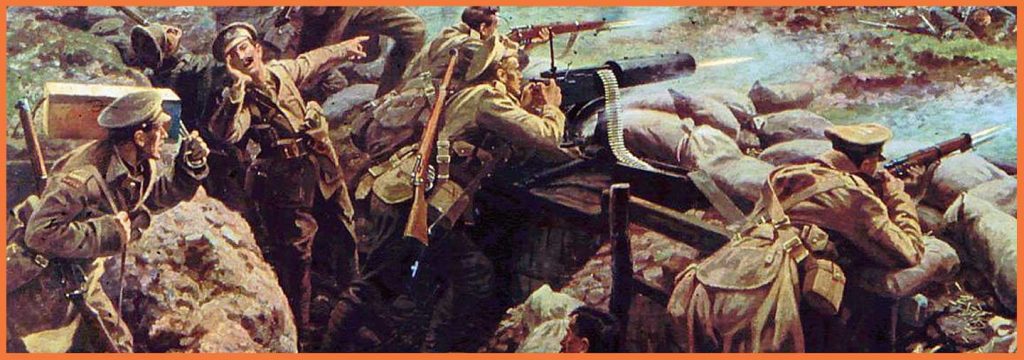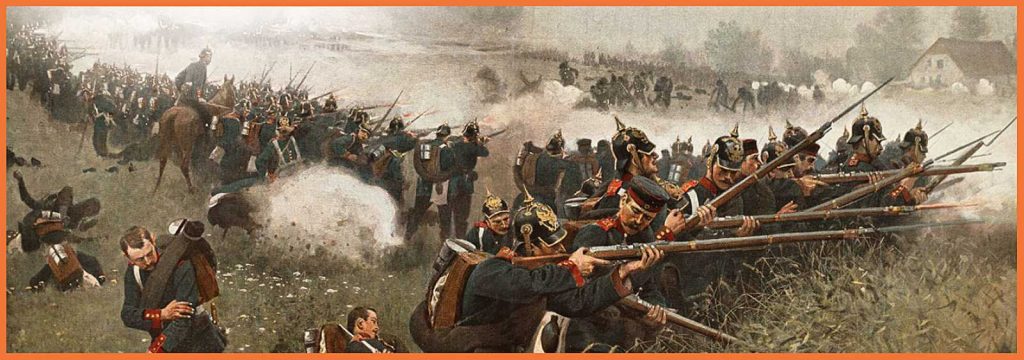Historical reference – firearms
In Europe, firearms appeared in the 14th century, when the development of technology made it possible to use the energy of gunpowder.
The powder charge in the first guns was ignited manually by raising a red-hot rod to the ignition hole. In the first half of the 15th century, a wick lock appeared in firearms. The main features of the new weapon were: the predecessor of the modern trigger – a serpentine lever located on the gun bed, to which the wick was attached. When the lower end of the coil was pressed, the upper one lowered, and the smoldering wick touched the gunpowder on the shelf. The main disadvantage of wick guns was their relatively low resistance to moisture and dependence on the wind, a gust of which could blow away the seed, in addition, the shooter had to constantly have access to an open fire.
In the 15th – 17th centuries, a wheel lock was used, in which the spark for igniting the powder charge was etched with the help of a rotating wheel with a notch. In the 17th and early 18th centuries, the cheap, convenient impact flint lock replaced the wheel lock.

At the beginning of the XIX century. further development of firearms took place.
One of the innovations was the use of a capsule mechanism. In the capsule lock, a chemical explosive based on thunderous mercury (mercury fulminate) was used. The main element of the capsule lock is a primer tube (brand tube) screwed into the breech, a copper or brass cap-capsule is put on it, on which the trigger with a flat head hits. The capsule lock was simple, cheap, more reliable, and by the 1840s it had replaced the flint lock in the armies of almost all developed countries (it existed until the 60s of the XIX century). Moreover, at first flintlock weapons were converted into capsule weapons (the trigger was replaced, the ignition hole was blocked, and the firing tube was installed).
The middle of the 19th century was marked by a violent race of small arms. Initially, in the countries of Western Europe, and later in Russia, rifled weapons were adopted, which to some extent solved the problem of long-range and shooting accuracy. However, the need to load rifles from the muzzle reduced the rate of fire, and in combat conditions it was very inconvenient and dangerous for the shooter.
The next improvement of rifles was the appearance of breech-loading systems. The first breech-loading rifles were produced as early as the 16th century. A new impulse for the development of breech-loading rifles was the invention of the French gunsmith K. Lefochet in the 1930s. – guns with a breakable barrel. However, due to the fact that the barrel of the Lefochet rifle wobbled, it was unsuitable as a military weapon, but it became widely used by hunters.
The further development of breech-loading rifles is connected with the transition from paper to metal cartridge, which had better ballistic characteristics and prevented the breakthrough of powder gases from the shutter.
There are many designs of breech-loading rifles with original and various shutter configurations. These were systems with hinged, crane, swinging and longitudinally sliding shutters.
Hinged shutters were initially the most popular. The folding shutters rotated both about the transverse horizontal axis and about the longitudinal axis, that is, they swung up and forward and up and to the side, as, for example, on the Springfield and Krnk rifles. Among rifles with a folding bolt, the Remington system of the 1864 model was distinguished by its originality, simplicity and reliability. The Remington system was recognized and had a relatively wide spread for quite some time.

Much less common were tap shutters, which opened and closed access to the barrel by turning around its longitudinal axis.
The Austrian Werndl rifle of the 1867 model had such a bolt. The Werndl shutter did not become widespread due to its high cost and the appearance in the 1870s of more convenient longitudinally sliding shutters.
A number of systems used rocking shutters, first proposed by the American gunsmith Peabody in 1860. For charging, the shutter was lowered using a lever that served simultaneously as a trigger spring. The Peabody bolt, due to its low friction, ease of operation, insensitivity to clogging and contamination, good extraction and reliable locking, proved so practical that it caused many imitations, and was soon greatly improved by Roberts, Martini, Henry, Westley, Richards and other famous gunsmiths.
Longitudinally sliding shutters turned out to be the best shutters of breech-loading rifles for a unitary cartridge. Their advantages consisted in speeding up charging and cocking the firing mechanism at the same time as opening and closing the bolt, and better extraction of cartridges. In 1870, after radical modernization and improvement, the American rifle of H. Berdan was adopted by the Russian army under the designation “Berdan-2”. After a number of improvements, it earned the reputation of one of the best in the world, on its basis, dragoon, Cossack variants, as well as a carbine were created. The French Gra rifle of the 1874 model is a very interesting “transitional” system, repeatedly modernized later (Gras-Kropachek magazine systems, etc.), and has earned high praise from the military, due to good combat characteristics, thoughtfulness of the system and excellent manufacturing quality.
Subsequently, breech-loading rifled small arms were often converted into smoothbore weapons and used as hunting weapons.
